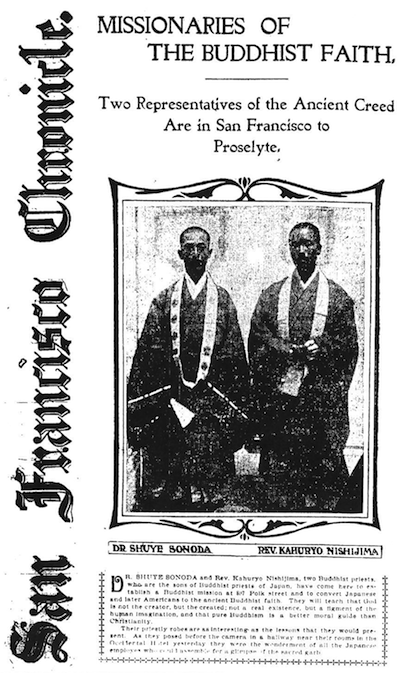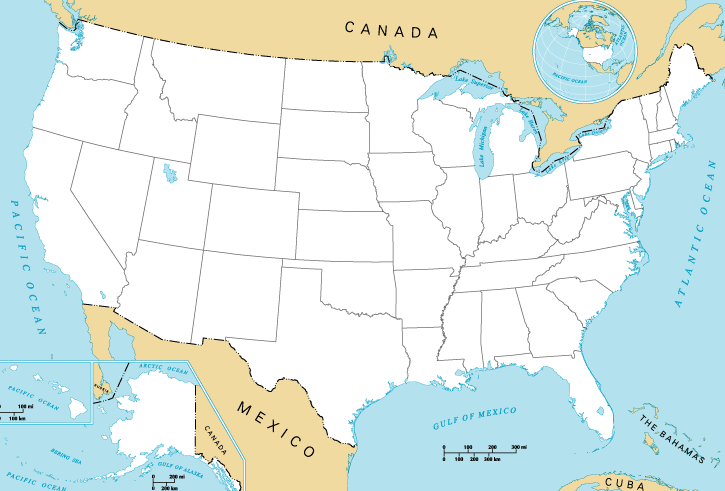|
Bishop Of The Buddhist Churches Of America
The bishop of the Buddhist Churches of America is the highest spiritual leader in the Buddhist Churches of America (BCA). Since BCA is part of Honganji-ha, the bishop is subordinate to the Monshu of Honganji-ha. Between 1899 and 1918 the leader of Buddhist Mission of North America (BMNA) had the title ''kantoku'' (superintendent). 1918 the title was changed to ''sochō'' (bishop). BMNA changed its name to Buddhist Churches of America in 1944. Nomenclature The leader of Buddhist Mission of North America, later Buddhist Churches of America, held the title ''kantoku'' between 1899 and 1918.Seager 2012, p. 54 ''Kantoku'' has been translated to "superintendent"Ama 2011, p. 32 and "director". In 1918, the title was changed to ''sochō'', which has been translated as "chancellor"Seager 2012 p. 54 and "president". The official and most common translation, however, is "bishop".Seager 2012 p. 54 The translation of ''sochō'' to "bishop" is not literal, but rather an approximate equivalen ... [...More Info...] [...Related Items...] OR: [Wikipedia] [Google] [Baidu] |
Marvin Harada
Marvin Harada is a Jōdo Shinshū Buddhist minister within the Buddhist Churches of America, and serves as its bishop since 1 April 2020. As bishop of BCA, he also serves as the superintendent of Hongwanji-ha's North American district. On 25 May 2021, he served as the representative of the Mahayana tradition in a celebration of Gautama Buddha's birthday (Vesak) arranged by the White House. Biography He was born in Ontario, Oregon. His grandparents, farmers from Hiroshima Prefecture and Yamaguchi Prefecture, emigrated to the United States in early 20th century. He majored in religious studies at University of Oregon, and received a Master of Arts in Buddhist Studies from Institute of Buddhist Studies. After acquiring these degrees, he moved to Japan to study at Ryukoku University and the Honganji-ha seminary Chuo Bukkyo Gakuin. He received a M.A. in Shin Buddhist Studies from Ryukoku University. Prior to becoming bishop, he served as a minister at Orange County Buddhis ... [...More Info...] [...Related Items...] OR: [Wikipedia] [Google] [Baidu] |
Reverend
The Reverend is an honorific style most often placed before the names of Christian clergy and ministers. There are sometimes differences in the way the style is used in different countries and church traditions. ''The Reverend'' is correctly called a ''style'' but is often and in some dictionaries called a title, form of address, or title of respect. The style is also sometimes used by leaders in other religions such as Judaism and Buddhism. The term is an anglicisation of the Latin ''reverendus'', the style originally used in Latin documents in medieval Europe. It is the gerundive or future passive participle of the verb ''revereri'' ("to respect; to revere"), meaning " ne who isto be revered/must be respected". ''The Reverend'' is therefore equivalent to ''The Honourable'' or ''The Venerable''. It is paired with a modifier or noun for some offices in some religious traditions: Lutheran archbishops, Anglican archbishops, and most Catholic bishops are usually styled ''The Mo ... [...More Info...] [...Related Items...] OR: [Wikipedia] [Google] [Baidu] |
Buddhist Churches Of America
The Buddhist Churches of America (abbreviated as BCA in English, ' or ''Beikoku Bukkyōdan'' in Japanese) is the United States branch of the Nishi Honganji subsect of Jōdo Shinshū ("True Pure Land School") Buddhism. The BCA headquarters is at 1710 Octavia Street, San Francisco, and currently under the leadership of Terri Omori, its first female president. It is the oldest Buddhist organization in the continental United States. Origins and development An earlier separate branch of the Nishi Hongwanji-ha was established on the Hawaiian Islands in the 1880s when it was the Kingdom of Hawaii, the Honpa Hongwanji Mission of Hawaii. Many Japanese had also immigrated to Hawaii to work on the plantations there. The BCA hopes that ongoing American interest in the Dharma will lead to a new interest in Jōdo Shinshū and its revival in the United States. The BCA has attempted to accomplish this goal chiefly through academia, "minister's assistant" training, and through cultural event ... [...More Info...] [...Related Items...] OR: [Wikipedia] [Google] [Baidu] |
San Francisco
San Francisco (; Spanish language, Spanish for "Francis of Assisi, Saint Francis"), officially the City and County of San Francisco, is the commercial, financial, and cultural center of Northern California. The city proper is the List of California cities by population, fourth most populous in California and List of United States cities by population, 17th most populous in the United States, with 815,201 residents as of 2021. It covers a land area of , at the end of the San Francisco Peninsula, making it the second most densely populated large U.S. city after New York City, and the County statistics of the United States, fifth most densely populated U.S. county, behind only four of the five New York City boroughs. Among the 91 U.S. cities proper with over 250,000 residents, San Francisco was ranked first by per capita income (at $160,749) and sixth by aggregate income as of 2021. Colloquial nicknames for San Francisco include ''SF'', ''San Fran'', ''The '', ''Frisco'', and '' ... [...More Info...] [...Related Items...] OR: [Wikipedia] [Google] [Baidu] |
Honganji-ha
Jodo Shinshu Hongwanji-ha (official name), commonly called Honganji-ha, is a Japanese Buddhist organization. It is a sub-sect within Jodo Shinshu. Its head temple is Nishi Hongan-ji is a Jōdo Shinshū Buddhist temple in the Shimogyō ward of Kyoto, Japan. It serves as the head temple of the sub-sect Honganji-ha. It is one of two Jōdo Shinshū temple complexes in Kyoto, the other being Higashi Hongan-ji, which is the .... It is the largest Jodo Shinshu sub-sect, the second largest being Otani-ha. Hongwanji-ha has declared itself against the Iraq War. It has millions of members. References {{Authority control Schools of Jōdo Shinshū Shinshū Honganji-ha ... [...More Info...] [...Related Items...] OR: [Wikipedia] [Google] [Baidu] |
Monshu
The Monshu (門主), or ''keeper of the gate'' is a term sometimes used in Japanese Buddhism to denote the head of a monastery, as in the case of Jōdo-shū and Tendai Buddhism, but in the case of the Nishi Hongan-ji sub-sect of Jōdo Shinshū Buddhism, it refers to the spiritual leader of the sect, and direct descendant of its founder Shinran. Jōdo Shinshū The Monshu in Jōdo Shinshū Buddhism was the guardian of Shinran's mausoleum, as well as the head of the sect. This position was started when the youngest daughter of Shinran, Kakushinni, installed her son as the custodian of the small shrine which held Shinran's image and ashes at Ōtani, in Kyoto. In time the small shrine grew into what is now the Hongan-ji temples (east and west). When the temple split into two temples, the West Temple, or ''Nishi Honganji'' continued to use the term Monshu, while the East Temple, or ''Higashi Hongan-ji'' gradually adopted the term "Hossu". In the line of Monshu descendants, notewor ... [...More Info...] [...Related Items...] OR: [Wikipedia] [Google] [Baidu] |
Honpa Hongwanji Mission Of Hawaii
The Honpa Hongwanji Mission of Hawaii ( ja, 本派本願寺ハワイ別院, ''Honpa Honganji Hawai Betsuin'') is a district of the Nishi (West) Hongwanji branch of Jodo Shinshu Buddhism, a school of Mahayana Pure Land Buddhism. History Jodo Shinshu Buddhism was established in Hawaii as a result of the immigration of Japanese people to work the sugarcane plantations in Hawaii. The first Hongwanji temple in the Hawaiian islands was dedicated on March 3, 1889. In 1897, the Nishi Hongwanji in Kyoto, Japan began sending official ministers to establish temples for Japanese immigrants in Hawaii and the mainland United States. The first was Kenjun Miyamoto, who laid the groundwork for the ministry. Honi Satomi was the first priest, serving from 1898 until 1900, when he returned to Japan. Yemyo Imamura took over for Satomi in 1900, and served until his death in 1932. Since these early days, 36 temples have been established across the Hawaiian Islands, including the Honpa Hongwanji Hawa ... [...More Info...] [...Related Items...] OR: [Wikipedia] [Google] [Baidu] |
Jodo Shinshu Buddhist Temples Of Canada
The Jodo Shinshu Buddhist Temples of Canada are a group of temples and fellowships that are affiliated with the Nishi Hongan-ji of Kyoto, Japan, the mother temple of the Jodo Shinshu (True Pure Land) sect of Buddhism. Groups follow the interpretation of the Buddha-Dharma according to Shinran Shonin (1173–1262), the founder of Jodo Shinshu Buddhism. Shinran promoted the principle of "dependent co-arising" as the basis for individual liberation. He attempted to understand the dharma in view of his own existence and thus derived the Nembutsu (recitation of "Namu Amida Butsu": Amitabha Buddha's name) teaching, which he emphasized as an expression of thanks and joy in realizing the interrelated nature of human existence. Established in 1933, it is the oldest Buddhist organization in Canada. The national office for the Jodo Shinshu Buddhist Temples of Canada (formerly Buddhist Churches of Canada) is located in Richmond, British Columbia. History Japanese Canadians first establis ... [...More Info...] [...Related Items...] OR: [Wikipedia] [Google] [Baidu] |
Theravada Buddhism
''Theravāda'' () ( si, ථේරවාදය, my, ထေရဝါဒ, th, เถรวาท, km, ថេរវាទ, lo, ເຖຣະວາດ, pi, , ) is the most commonly accepted name of Buddhism's oldest existing school. The school's adherents, termed Theravādins, have preserved their version of Gautama Buddha's teaching or ''Dharma (Buddhism), Buddha Dhamma'' in the Pāli Canon for over two millennia. The Pāli Canon is the most complete Buddhist canon surviving in a Indo-Aryan languages, classical Indian language, Pali, Pāli, which serves as the school's sacred language and ''lingua franca''.Crosby, Kate (2013), ''Theravada Buddhism: Continuity, Diversity, and Identity'', p. 2. In contrast to ''Mahāyāna'' and ''Vajrayāna'', Theravāda tends to be conservative in matters of doctrine (''pariyatti'') and monastic discipline (''vinaya''). One element of this conservatism is the fact that Theravāda rejects the authenticity of the Mahayana sutras (which appeared c. ... [...More Info...] [...Related Items...] OR: [Wikipedia] [Google] [Baidu] |
Missionaries Of The Buddhist Faith
A missionary is a member of a religious group which is sent into an area in order to promote its faith or provide services to people, such as education, literacy, social justice, health care, and economic development.Thomas Hale 'On Being a Missionary' 2003, William Carey Library Pub, . In the Latin translation of the Bible, Jesus Christ says the word when he sends the disciples into areas and commands them to preach the gospel in his name. The term is most commonly used in reference to Christian missions, but it can also be used in reference to any creed or ideology. The word ''mission'' originated in 1598 when Jesuits, the members of the Society of Jesus sent members abroad, derived from the Latin ( nom. ), meaning 'act of sending' or , meaning 'to send'. By religion Buddhist missions The first Buddhist missionaries were called "Dharma Bhanaks", and some see a missionary charge in the symbolism behind the Buddhist wheel, which is said to travel all over the earth br ... [...More Info...] [...Related Items...] OR: [Wikipedia] [Google] [Baidu] |
Continental USA
The contiguous United States (officially the conterminous United States) consists of the 48 adjoining U.S. states and the Federal District of the United States of America. The term excludes the only two non-contiguous states, Alaska and Hawaii (also the last ones admitted to the Union), and all other offshore insular areas, such as American Samoa, Guam, the Northern Mariana Islands, Puerto Rico, and the U.S. Virgin Islands. The colloquial term "Lower48" is used also, especially in relation to just Alaska (Hawaii is farther south). The related but distinct term continental United States includes Alaska (which is also on the continent of North America but separated from the 48 states by British Columbia and Yukon of Canada), but excludes the Hawaiian Islands and all U.S. territories in the Caribbean and the Pacific. The greatest distance (on a great-circle route) entirely within the contiguous U.S. is 2,802 miles (4,509 km), between Florida and the State of Washington; th ... [...More Info...] [...Related Items...] OR: [Wikipedia] [Google] [Baidu] |






